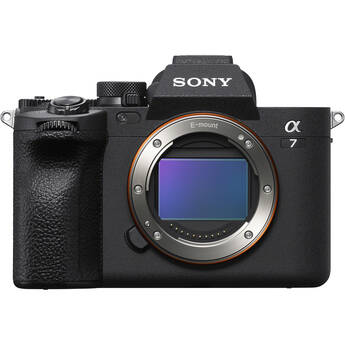Sony a7 IV Review – a Pretty Advanced “Entry-Level” Mirrorless Camera
Music Courtesy of Epidemic Sound
It’s finally here! Sony just announced the new a7 IV. As I got to test a pre-production camera for two days, I am happy to share my thoughts in this Sony a7 IV review below. Let’s jump right in!
Sony’s a7 series has dominated the full-frame mirrorless market for many years ever since the first camera in the line was introduced in 2013. In terms of their video capabilities, which is what interests us at CineD the most, the a7S and later the a7S II and a7S III (Review | Lab Test) absolutely dominate the field.
But what if you don’t need their super low light capability, yet you want higher resolution stills images than the a7S series can deliver?
The a7 III (Review) was a more budget-conscious solution for that, however, it was released three and a half years ago – which means unlike the a7S III, the a7 III has no internal 10-bit video recording capabilities, still uses the old tiny batteries, and the autofocus is lacking. But it seems like Sony heard our prayers: they just introduced the a7 IV – their new entry-level full-frame mirrorless camera.
Doug Jensen's Sony FX6 Camera Master Class
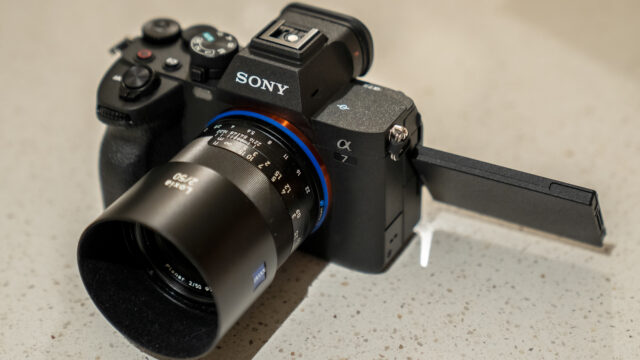
Sony a7 IV for video
So the question is, what do we get in this new “basic“ model? And as it turns out quite a lot.
The Sony a7 IV features a newly developed 33 Megapixel Exmor R back-illuminated full-frame sensor, and combines it with the same Bionz XR processor we find in the higher end a7S III and the ultra-high-end Alpha 1. In comparison, the a7 III only had a 24 Megapixel sensor, so that’s a big step up for photographers.
And in terms of video quality, it oversamples the 7K from the sensor to 4K for a very detailed image. Not less importantly, we now have all the same 10-bit 4:2:2 color space codecs that we have in the a7S III and a1, which of course is amazing. That also means that from a compression point of view, this camera shoots the same quality as a € 10,000 Sony FX9.
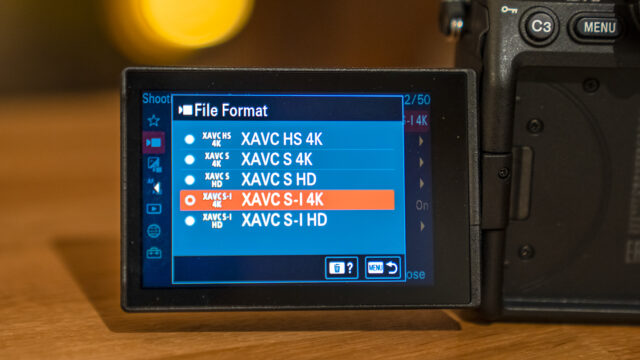
The Sony a7 IV achieves that by using the all-intraframe H.265-based XAVC-S-I codec which has a maximum bitrate of up to 600 Mbps. In order to be able to save all that data, the camera uses CFExpress type A cards alongside SDXC cards, the same as with the a7S III and the a1.
Sony claims color reproduction is also significantly improved with the new sensor and processing, and for video, we now also have the S-Cinetone picture profile, which is Sony’s signature “nice-looking skin tone mode“ while maintaining a good latitude. This of course makes it easy to keep image compatibility with many higher-end Sony mirrorless and cinema cameras that feature S-Cinetone.
Low light shots are significantly less noisy thanks to better processing, despite the higher sensor pixel count which usually adds even more noise. The 5-axis IBIS is still there of course and works even better now.
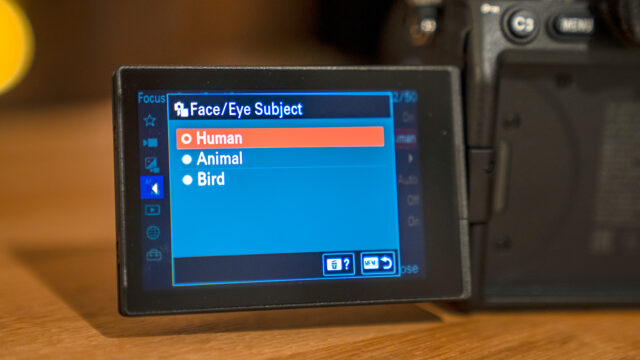
Improved autofocus & ISO
Autofocus in Sony mirrorless cameras has really become very good over the last few years, and the a7 IV is no exception: there’s real-time touch tracking, but also AF face tracking that can be set to detect humans, animals, such as birds for photographers – yes, it seems like birds are not animals for Sony, interesting… But honestly speaking, it works remarkably well. I tested the animal autofocus tracking also at Vienna’s zoo.
It seems again that the native ISO in Slog3 is 800 (though this is not confirmed by Sony), and while I tried some low-light shots during the little time I had, I can’t say yet “how low can you go” with ISO settings in terms of noise. We will of course perform one of our popular lab tests on this camera when we receive a production model at a later point.
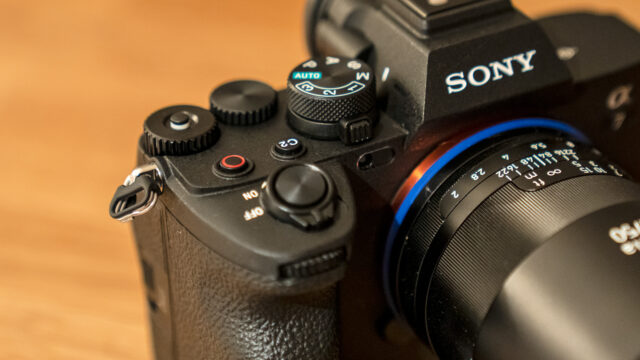
Sony a7 IV vs. Sony a7S III
Now you see, in video terms, this camera is very similar to the a7S III, but what are the differences and downsides? Well, it turns out the a7 IV can only shoot up to 30 frames per second in 4K when using the full-frame sensor width. That is a huge difference to the 120 frames per second in 4K of the a7S III, in full-frame mode. However, up to 60 frames per second are available in the Super35 crop mode of the a7 IV and it does 120 frames per second in full HD.
And in case you forgot, the biggest downside of the a7S III is that it doesn’t have a 4K Super35 crop mode at all because of its lower 12 Megapixel resolution.
Also, just like with the a7S III and the a1, be sure to have „High-temperature mode“ enabled when shooting video. Without it being enabled and when the screen folded in, the a7 IV overheated and then shut off on me after about 12 minutes of filming. With the high-temperature mode enabled, this didn’t happen anymore.
In terms of the body, the a7 IV has a high-resolution flip-out touch LCD screen, which is of course great for filming, and there’s a record button on top of the camera. EVF resolution is much improved and very decent for focusing. It comes with a full-size HDMI port as well, and a multi-purpose USB-C 3.2 Gen2 10Gbps connector for high-speed offloading and direct connectivity to 1000BASE-T Ethernet networks for wired FTP data transfers. Also new in this camera is the Multi-interface Shoe (With a digital audio interface). Those with sharp eyes will immediately notice that the menu structure is the same as the one found in the A1 and a7S III. Last but not least, there are a microphone and headphone jacks as well.
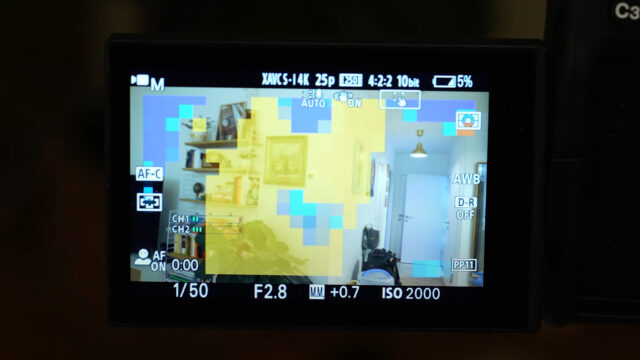
New features
There are two innovative features for video shooters in the camera that no other Sony camera has yet. One of them is a lens “Breathing Compensation” which crops the image a bit to conceal the focus breathing of a lens when you shift the focus. It only works with original Sony lenses as far as I saw when briefly testing it.
The other new feature is called “Focus Map” and it immediately makes your preview image quite colorful – it visualizes depth of field by showing what’s behind your depth of field in blue and what’s in front of it in red. Whatever is not in one of those two colors is in focus. This can be useful to quickly determine how much of your image is in focus when adjusting the iris value.
I really enjoyed shooting with the Sony a7 IV, and it’s a lot more fully featured than I thought it would be for this “basic” level of camera. Sony clearly didn’t cut too many features out of this model and there will be people buying this instead of an a7S III if they don’t need the super low light capabilities or 120 fps recording of the a7S III. This camera will definitely find its market.
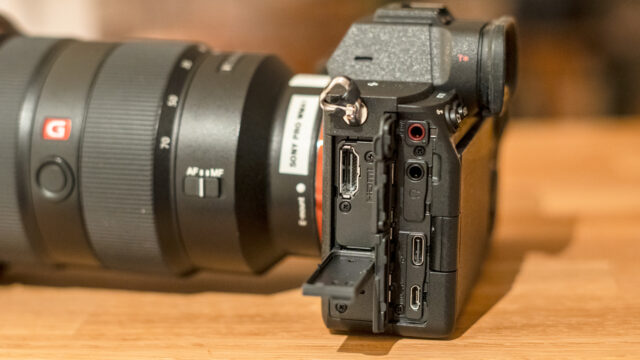
Pricing and availability
The Sony a7 IV will be sold as a stand-alone product for $2,498 / €2370 without VAT (€2799 including), or, together with the SEL28-70mm kit lens for €2999. The camera is available now for pre-order and will be delivered during December 2021.
What do you think? Might this be your next favorite mirrorless camera? Share your thoughts in the comments below!
